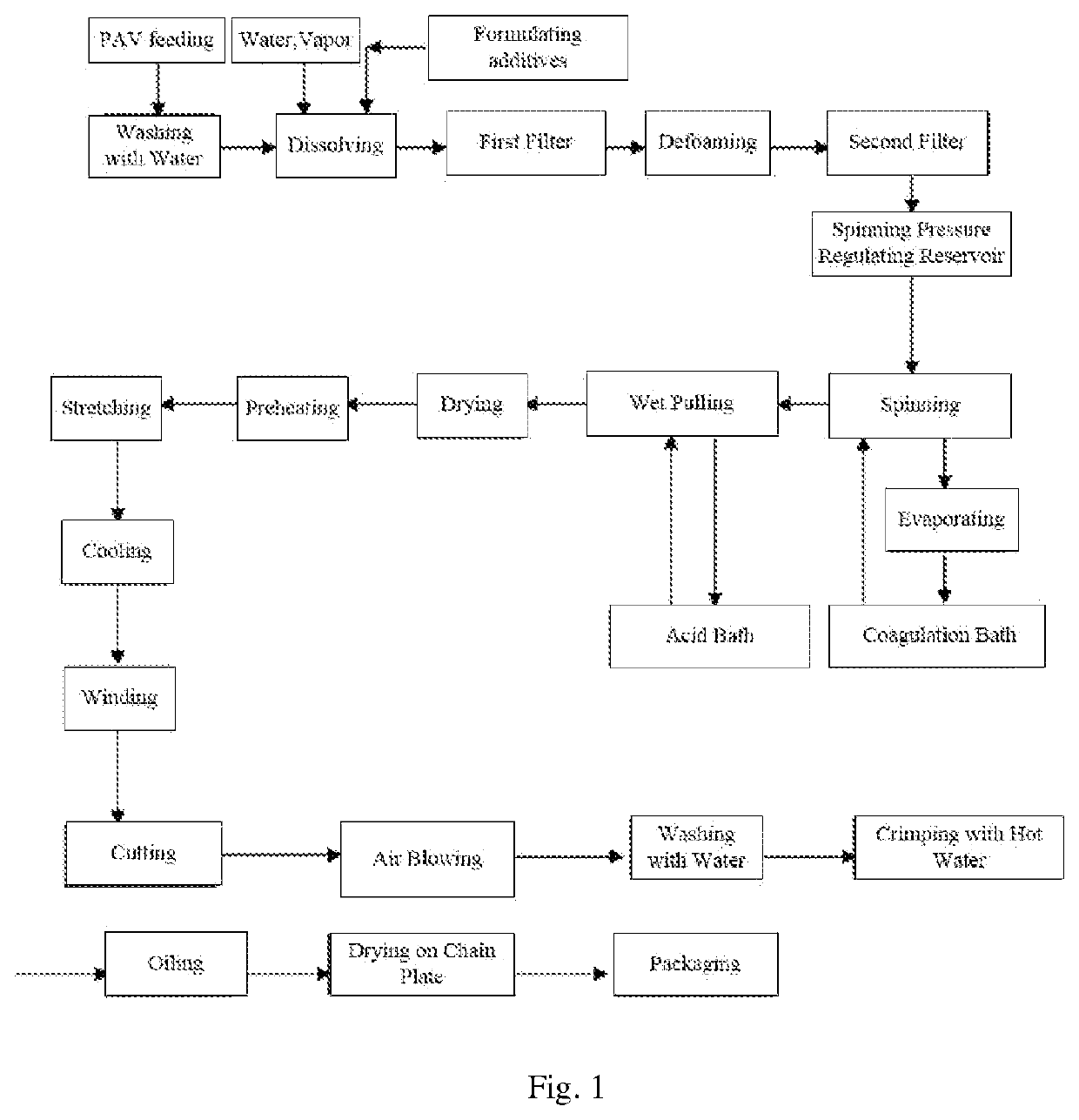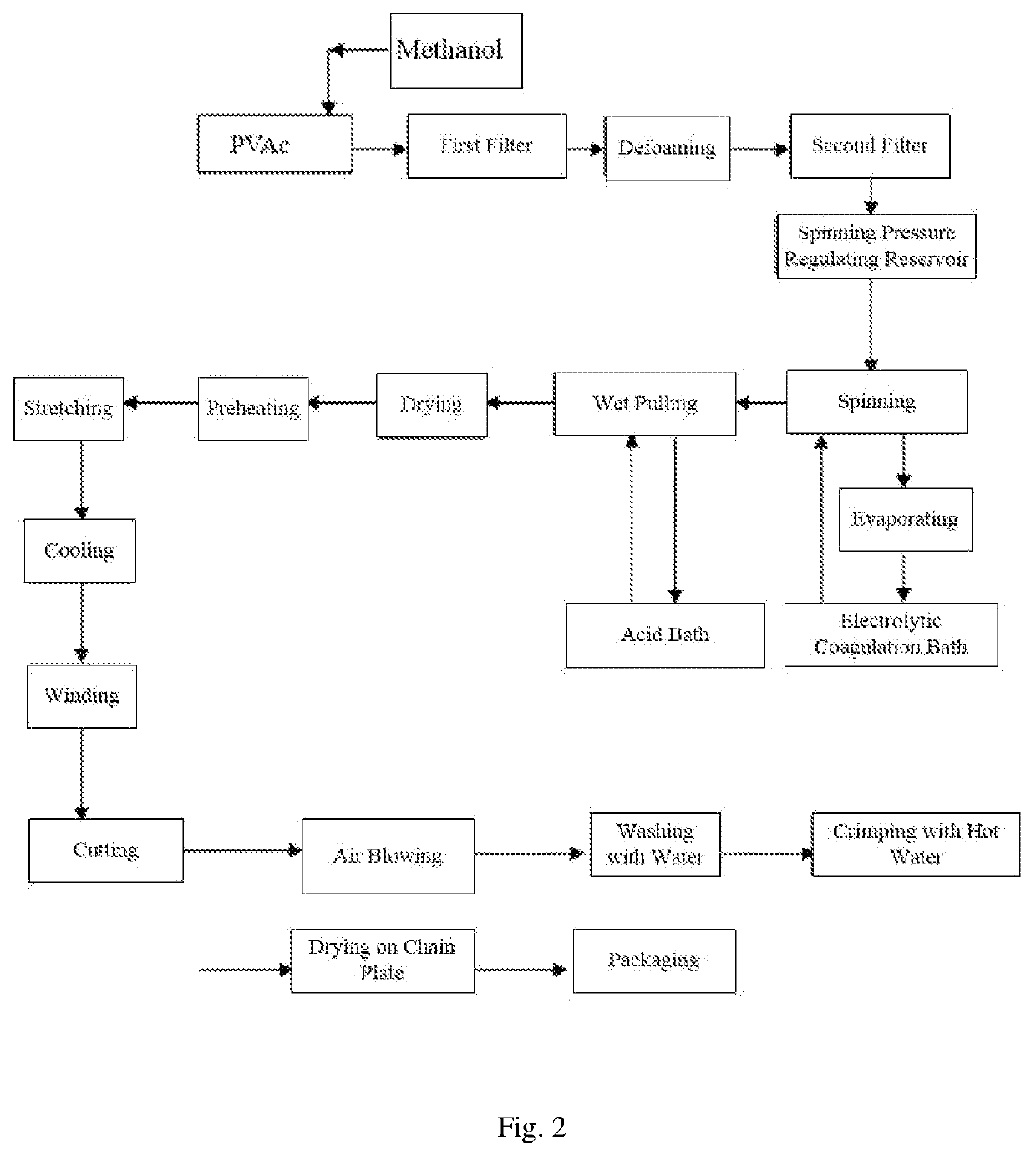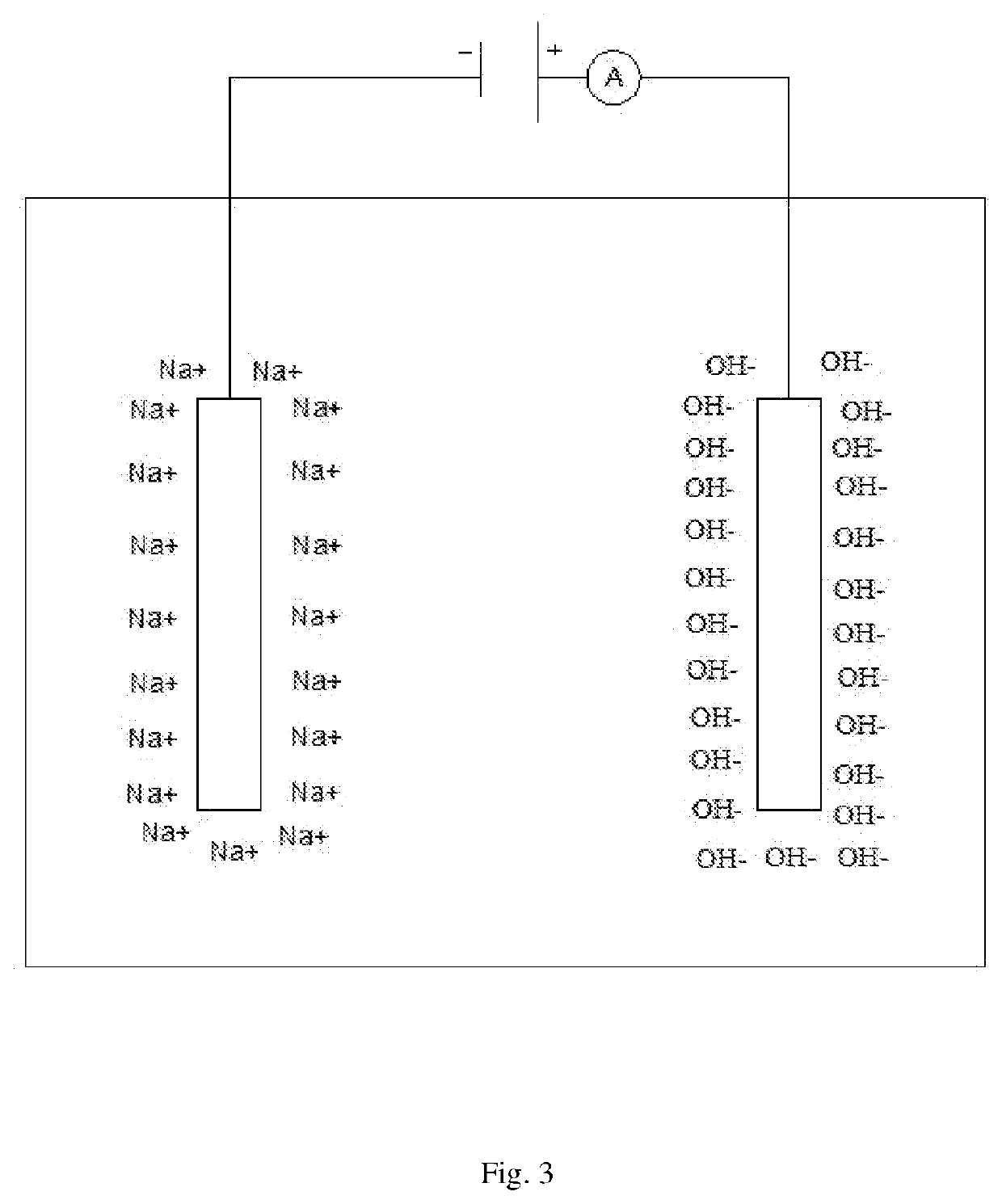Preparation method of pva fiber
a technology of polyvinyl alcohol and fiber, applied in the field of polyvinyl alcohol fiber production, can solve the problems of increased risk of use, low pva purity and high ash content, and achieve the effects of reducing impurities, improving purity, and reducing impurities
- Summary
- Abstract
- Description
- Claims
- Application Information
AI Technical Summary
Benefits of technology
Problems solved by technology
Method used
Image
Examples
example 1
[0049]Step 1,
[0050]180 kilograms of polyvinyl acetate particles and 270 kilograms of methanol solution were respectively weighed and added into a reactor in an adding order of the polyvinyl acetate first and then the methanol, and the temperature was raised to 50° C., so that the polyvinyl acetate could be fully dissolved in the methanol solution. The concentration ratio of the PVAc to the methanol in spinning dope was 2:3.
[0051]The obtained PVAc / MT solution was filtered for the first time, defoamed and filtered for the second time, and then introduced into a spinning pressure regulating reservoir.
[0052]Step 2, Electrolyte
[0053]The electrolyte was obtained by adding 700 kg of water into an insulating electrolytic cell, and then 270 kg of potassium hydroxide solid and 30 kg of 99% isopropyl alcohol.
[0054]② Electrolytic Cell
[0055]According to a flow chart of the process, anode and cathode electrodes were formed in the electrolytic cell through the wires, and the electrode material was...
example 2
[0063]Step 1,
[0064]200 kilograms of polyvinyl acetate particles and 250 kilograms of methanol solution were respectively weighed and added into a reactor in an adding order of the polyvinyl acetate first and then the methanol, and the temperature was raised to 55° C., so that the polyvinyl acetate could be fully dissolved in the methanol solution. The concentration ratio of the PVAc to the methanol in spinning dope is 4:5.
[0065]The obtained PVAc / MT solution was filtered for the first time, defoamed and filtered for the second time, and then introduced into a spinning pressure regulating reservoir.
[0066]Step 2,
[0067]① Electrolyte
[0068]The electrolyte was obtained by adding 700 kg of water into the insulator electrolytic cell, and then 280 kg of potassium hydroxide and 20 kg of 99% alcohol.
[0069]② Electrolytic Cell
[0070]According to a flow chart of the process, anode and cathode electrodes were formed in the electrolytic cell through the wires, and the electrode material was graphite....
example 3
[0078]Step 1,
[0079]200 kilograms of polyvinyl acetate particles and 250 kilograms of methanol solution were respectively weighed and added into a reactor in an adding order of the polyvinyl acetate first and then the methanol, and the temperature was raised to 55° C., so that the polyvinyl acetate could be fully dissolved in the methanol solution. The concentration ratio of the PVAc to the methanol in spinning dope is 4:5.
[0080]The obtained PVAc / MT solution was filtered for the first time, defoamed and filtered for the second time, and then introduced into a spinning pressure regulating reservoir.
[0081]Step 2,
[0082]① Electrolyte
[0083]The electrolyte was obtained by adding 700 kg of water into the insulator electrolytic cell, and then 280 kg of potassium hydroxide and 20 kg of 99% alcohol.
[0084]② Electrolytic Cell
[0085]According to a flow chart of the process, anode and cathode electrodes were formed in the electrolytic cell through the wires, and the electrode material was graphite....
PUM
| Property | Measurement | Unit |
|---|---|---|
| temperature | aaaaa | aaaaa |
| DC voltage | aaaaa | aaaaa |
| temperature | aaaaa | aaaaa |
Abstract
Description
Claims
Application Information
 Login to View More
Login to View More - R&D
- Intellectual Property
- Life Sciences
- Materials
- Tech Scout
- Unparalleled Data Quality
- Higher Quality Content
- 60% Fewer Hallucinations
Browse by: Latest US Patents, China's latest patents, Technical Efficacy Thesaurus, Application Domain, Technology Topic, Popular Technical Reports.
© 2025 PatSnap. All rights reserved.Legal|Privacy policy|Modern Slavery Act Transparency Statement|Sitemap|About US| Contact US: help@patsnap.com



